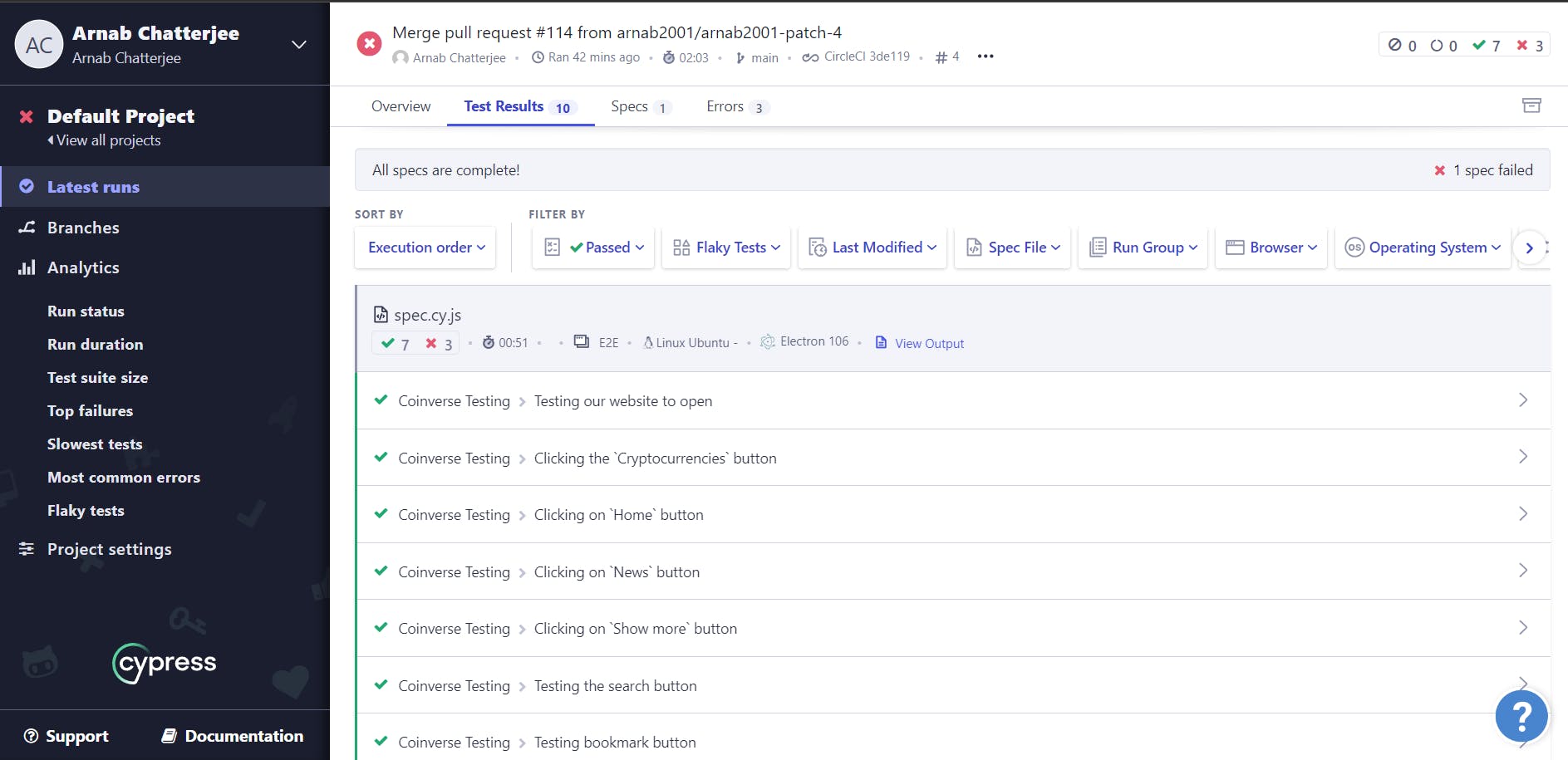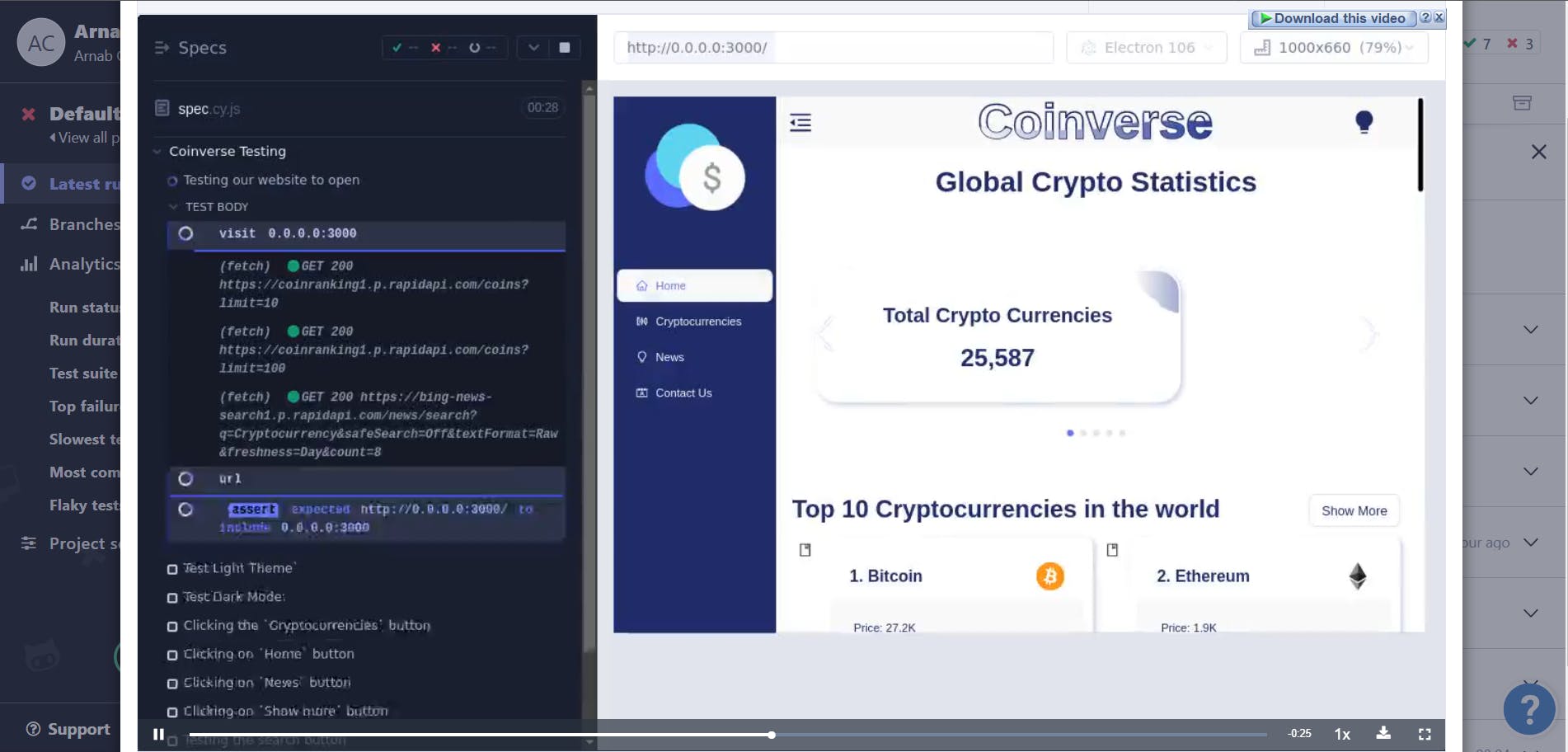Understanding Continuous Integration (CI): Importance and Getting Started with CircleCI
Introduction:
In modern software development, Continuous Integration (CI) has become an indispensable practice. CI involves the frequent and automated integration of code changes into a shared repository, accompanied by automated tests. This process aims to catch integration issues early, ensure code stability, and facilitate efficient collaboration among team members. In this blog post, we will explore what CI is, why it is important, and how to get started with CircleCI, a popular CI/CD platform.
Why Continuous Integration?
The Problem:
In a small development team working on a web application, there was a developer named Alex. One fine day, Alex made some changes to a critical module of the application. Eager to see the results, Alex hastily committed and pushed the code to the repository without running any tests or conducting a thorough review.
The Consequences:
Unbeknownst to Alex, the commit contained a small but significant error that went unnoticed. As the other team members pulled the latest changes and continued their work, the bug silently seeped into the codebase. Days later, during a critical demo with a potential client, the application crashed unexpectedly, leaving everyone perplexed and embarrassed.
The Solution:
If the development team implemented Continuous Integration, this unfortunate incident could have been averted.
What is Continuous Integration?
Continuous Integration is a development practice that involves frequently merging code changes into a shared repository. With CI, developers integrate their code changes early and often, allowing for quick feedback and identification of integration issues. Automated tests are a crucial component of CI, ensuring that changes don't break existing functionality and maintaining the stability of the application.
The Importance of Continuous Integration:
Early Issue Detection: CI catches bugs and integration issues early in the development cycle, enabling swift remediation. By identifying problems promptly, you can reduce the time and effort required for debugging and improve code quality.
Faster Feedback Loop: With CI, automated tests run on every code change, providing immediate feedback. Developers receive timely notifications about test failures, allowing them to rectify issues promptly and iterate faster.
Code Stability: CI promotes a stable codebase by integrating changes frequently. This practice helps identify conflicts, dependencies, and integration problems early, preventing codebase deterioration and ensuring a more reliable application.
Efficient Collaboration: CI fosters seamless collaboration among team members. Developers can work concurrently on different features and merge changes without conflicts. Automated testing through CI verifies that the changes are compatible, facilitating smoother integration.
Introducing CircleCI
CircleCI is a popular CI/CD platform that automates the software build, test, and deployment processes. It provides a flexible and scalable infrastructure for running jobs in containers, making it suitable for projects of any size. CircleCI supports various programming languages and offers extensive integrations with other tools in the software development ecosystem.
Key Features of CircleCI
Automated Testing: CircleCI empowers developers to run automated tests on their codebase. Whether it's unit tests, integration tests, or end-to-end tests, you can configure CircleCI to automatically execute these tests with every code change. This ensures that your code is thoroughly tested, reducing the risk of introducing bugs or regressions.
Scalable Infrastructure: CircleCI provides a scalable infrastructure to support your CI/CD needs. It utilizes container technology to spin up isolated build environments, allowing you to run your tests in parallel and achieve faster feedback. CircleCI's infrastructure scales seamlessly, accommodating the needs of projects of any size.
Extensive Integrations: CircleCI seamlessly integrates with popular version control systems like GitHub, Bitbucket, and GitLab. It can pull code changes, trigger builds automatically, and report builds statuses back to these platforms. Additionally, CircleCI offers integrations with other developer tools, such as Slack and Jira, enhancing collaboration and communication within your team.
Customizable Configuration: CircleCI allows you to define your build and deployment process using a simple YAML configuration file (
.circleci/config.yml). This file specifies the steps, commands, and dependencies required to build and test your application. With this level of customization, you can tailor the CI/CD pipeline to fit your project's specific needs.
Getting Started with CircleCI and Cypress Cloud
CircleCI Setup:
Sign up for a CircleCI account and create a new project for your application here.
Connect CircleCI to your code repository (e.g., GitHub, Bitbucket, GitLab) .
Configure the necessary environment variables in CircleCI to store sensitive information securely, such as API keys and authentication tokens.
Cypress Cloud Integration:
Sign up for a Cypress account and create a project for your application here.
Install Cypress locally and write your tests using the Cypress framework.
Configure Cypress to work with Cypress Cloud by setting up your project and test configuration.
Configure CircleCI Pipeline:
Create a
.circleci/config.ymlfile in your project's repository root.Define the necessary steps in the pipeline, such as installing dependencies, building the application, and running tests.
Example to add cypress testing to
config.yml:version: 2.1 # Uses the official Cypress Orb # https://circleci.com/developer/orbs/orb/cypress-io/cypress orbs: cypress: cypress-io/cypress@3 workflows: build: jobs: - cypress/run: # For recording and parallelization to work you must set your CYPRESS_RECORD_KEY # in CircleCI → Project Settings → Environment Variables # Records in parallel to Cypress Cloud # https://docs.cypress.io/guides/guides/parallelization parallelism: 2 # Uses 2 parallel instances # Starts web server for E2E tests - replace with your own server invocation # https://docs.cypress.io/guides/continuous-integration/introduction#Boot-your-server start-command: npm start cypress-command: 'npx cypress run --record --parallel'To Utilize CircleCI orbs, Go to project settings and enable 3rd party blobs.
Enable Cypress Cloud Execution:
Configure your CircleCI pipeline to execute tests on Cypress Cloud by leveraging the Cypress orb and specifying the necessary Cypress Cloud environment variables.
The Cypress CircleCI Orb is a piece of the configuration set in your
.circleci/config.ymlfile to correctly install, cache, and run Cypress with very little effort.Customize the configuration to run tests in parallel or distribute them across multiple environments, maximizing test execution speed.
Monitor and Analyze Test Results:
View test results, including screenshots and videos, through the Cypress Dashboard to identify and troubleshoot issues efficiently.

Also, you can review the recording of your test from the cypress cloud dashboard

Leverage CircleCI's interface to monitor your CI pipeline's progress and view test outcomes.
Conclusion:
Continuous Integration is a game-changer in software development, ensuring code stability, faster feedback, and efficient collaboration. By harnessing the power of CircleCI and Cypress Cloud, you can automate your testing process, improve code quality, and accelerate your development workflow. Embrace CI with CircleCI and Cypress Cloud to unlock the full potential of reliable testing and seamless collaboration in your software projects.